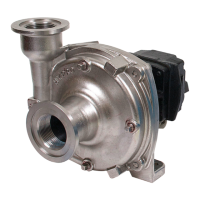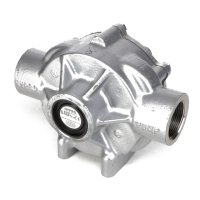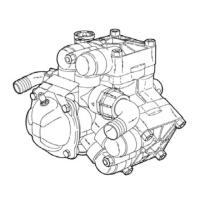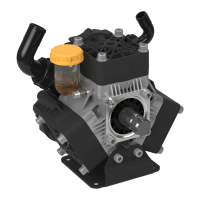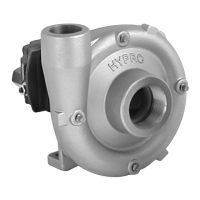3
Please Note: It is illegal to ship or transport any
hazardous chemicals without United States
Environmental Protection Agency Licensing.
1. Always drain and flush pumps before servicing or
disassembling for any reason.
2. Before returning unit for repair, drain out all liquids and
flush unit with neutralizing liquid. Then, drain the pump.
Attach a tag or include a written notice certifying that
this has been done.
3. Never store pumps containing hazardous chemicals.
Preparations Before Starting the Engine
1. Engines come from factory without oil. Please fill
with oil prior to starting!
2. Fuel: Check fuel level in tank, and do not over fill. Use
fresh, clean automotive fuel. Note: DO NOT FILL
FUEL TANK WHEN ENGINE IS RUNNING.
3. Engine Oil: Before checking or refilling with engine
oil, make sure the engine is stopped and placed on a
stable, level surface. Use oil recommended for ambient
air temperatures that the engine will be running at. See
chart below. Change oil after the first 20 hours and
every 100 hours thereafter.
4. Priming Water: IMPORTANT: PUMP MUST NOT BE
RUN DRY. On self-priming pumps, only the chamber
needs to be filled with liquid. The pump must not run
unless the priming chamber is completely filled with
liquid because there is a danger of damaging the
mechanical seal, which depends on the liquid for its
lubrication.
Self-priming models can be primed by removing the filler
cap located at the top of the pump where the discharge
line is mounted to the pump, and filling the priming
chamber with liquid. After use, the priming chamber
should be flushed and drained to avoid chemical corrosion
and damage from freezing. Drain by removing the lower
drain plug located at the bottom of the casing.
Starting the Pump
IMPORTANT: Before starting engine, be sure the
priming chamber is filled with liquid and the discharge
hose is secure.
1. Turn engine switch located by recoil starter to ON
position.
2. Turn the fuel cock to ON.
3. Push the throttle lever to a slightly open position.
4. Operation of choke lever.
When engine is cold:
In cold weather, start engine with choke in fully
closed position.
In warm weather, start engine with choke in half-
closed position.
When engine is warm:
Start engine with choke in fully open position.
5. Start engine by pulling recoil starter out quickly and
forcefully. Repeat pulling until the engine starts.
Operation of the Pump
1. Idle the engine for 3 to 5 minutes to warm it up.
2. Open the throttle lever to the upper zone after engine
has warmed up.
3. Once the pump has primed, you will note a load on the
engine; adjust rpms to proper speed for your pumping
application.
Stopping the Pump
1. Stop pump for a short time:
Run engine throttled all the way down (fully to the right).
Turn engine switch to OFF position.
2. Stopping pump for storage:
Turn fuel cock to OFF position instead of turning the
engine switch off.
Let the engine idle for 2 to 3 minutes until fuel in
carburetor is depleted and engine stops. If a valve is
installed on the discharge hose, you may run pump
with valve closed during this procedure.
Note: Pump must not be run dry. Make sure there
is water in the priming chamber.
Storage
1. Drain pump. Flush pump after use.
One of the most common causes for faulty pump
performance is gumming or corrosion inside the pump.
Flush the pump and entire system with a solution
that will chemically neutralize the liquid pumped. Mix
according to the manufacturer’s directions. This will
dissolve most residues remaining in the pump, leaving
the inside of the pump clean and ready for use.
2. Drain all the fuel from the fuel tank, fuel lines, and filter.
3. Store pump in a clean, dry environment.
Operation and Maintenance

